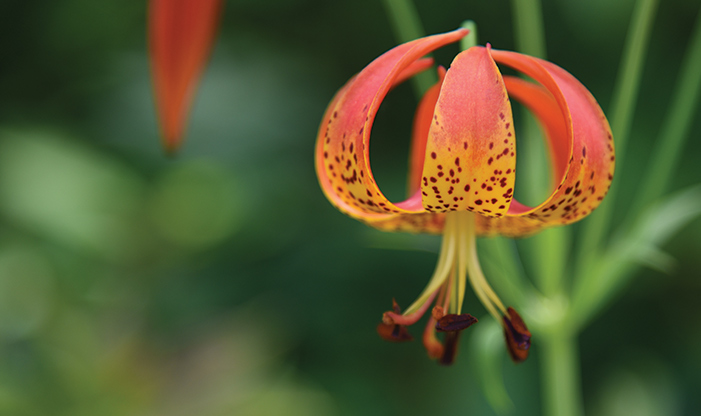As you hike the trails this season, you might see the evidence of two projects that are key to moving us closer to our conservation goals. These projects will add biodiversity to the Center’s landscape as well as preserve the land for future generations.
Removing Potential Hazard Trees Due to Emerald Ash Borer
Visitors may see felled ash trees. This is a sign we are making progress managing the results of Emerald Ash Borer’s (EAB) presence at the Center. Ash trees that are within 40 feet of a trail, lane, parking area or structure are being taken down or reduced. We’ve already taken 800 trees from around the pavilion, Preschool play spaces, parking lots, and terrace. By removing potentially hazardous trees, we eliminate any future safety issues for visitors as well as staff.
In 2016, the presence of EAB was confirmed at Schlitz Audubon. At that time, 35 percent of our canopy was ash trees. We knew EAB would kill almost all of them over time. In preparation, the team launched a comprehensive EAB response plan. As part of this ongoing plan, they are taking down potentially hazardous ash trees before they die.
A minimum of 2/3 of all coarse woody material produced by the felling of ash trees will remain on the ground as habitat. Up to 1/3 of this material is being utilized to produce firewood, saw logs, or wood chips for trail maintenance. Once the trees are down, our team will plant new ones, including Sugar Maple, Ironwood, Black Cherry, and other species. This will ensure a more diverse canopy and replenish our native forests.
Establishing a New Rain Garden
Visitors will also notice activity near the main building, where we are making improvements to an existing rain garden. Most of the work being done on this project will be visible from May 27 through June 6. Its purpose is to temporarily detain stormwater from impermeable surfaces around our building and reduce the flow of water into the gully to the east and into Lake Michigan. This will help prevent erosion while also adding plant diversity to the property.
As a part of the project, invasive Narrow-leaved Cattail, Common Buckthorn, and other undesirable species will be removed. Volunteers and staff will then plant 32 species of native plants, including Michigan Lily and Cardinal Flower. With the addition of native shrubs, trees, and herbaceous plants adapted to a wetland environment, there will be less bare soil and a more dense root zone to stabilize soil and reduce stormwater runoff.
Both of these projects will create more beautiful, high-quality habitat on the Center property while addressing conservation concerns. If you see staff and volunteers working while you’re hiking the trails, you’ll have the chance to witness our conservation team in action.


